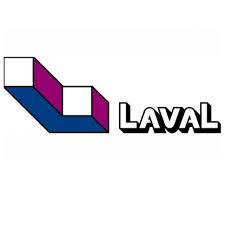Wood
Type of resources
Available actions
Topics
Keywords
Contact for the resource
Provided by
Formats
Representation types
Update frequencies
status
-

List of active factories with permits consuming more than 2000 cubic meters of unworked woody material, such as roundwood, shavings, sawdust, planers, bark, etc. In addition, category 8 is still included. It is represented by pulp and paper mills that do not require wood processing permits since their consumer products are mainly related to commercial pulp and fibers recovered from paper, cardboard or other materials.**This third party metadata element was translated using an automated translation tool (Amazon Translate).**
-

This data set contains the polygons delimiting the woods of the agglomeration of Montreal. The boundaries of the woods and their composition are the result of an analysis of aerial photos and/or of field visits and/or of particular ecological studies. These are constantly updated in accordance with the advancement of knowledge in the community. Some plant communities and their limits may therefore be imprecise.**This third party metadata element was translated using an automated translation tool (Amazon Translate).**
-
To slow the spread of the Hemlock woolly adelgid to new areas, the Canadian Food Inspection Agency (CFIA) uses measures to control the movement of potentially infested materials. Slowing the spread of HWA will protect Canada's environment and forest resources. It also helps keep international markets open to the forest industry and nurseries in non-regulated parts of Nova Scotia and in non-regulated parts of Canada.
-
This dataset represents city, county, district, district municipality, municipality, regional municipality, town, township, and united county boundaries for the Emerald Ash Borer regulated areas of Canada.File naming convention:Three-letter Pest's scientific name + Geographic Area Abbreviation + Layer Content Abbreviation + Region. Example: aplCANregr == apl (Agrilus planipennis) + CAN (Canada) + reg (Regulated) + r (Region).
-
To slow the spread of the Brown spruce longhorn beetle to new areas, the Canadian Food Inspection Agency (CFIA) uses measures to control the movement of potentially infested materials. Slowing the spread of the Brown spruce longhorn beetle will protect Canada's environment and forest resources. It also helps keep international markets open to the forest industry and nurseries in non-regulated parts of Ontario and Quebec and in the rest of Canada.
-
Canada's National Forest Inventory ground plots are a stratified random sample of select Canadian terrestrial ecozones. Ground plots are remeasured periodically. Data from ground plots include field measurements, compiled attributes and descriptions made at a point inside or adjacent to a photo plot. Ground plot data include individual large-tree and small-tree measurements, shrub tallies, understory vegetation sampling, vegetation cover, stump assessments, woody debris data, surface substrates, site descriptions and soil measurements.
-

Mapping of woods and forest corridors of interest in the urban planning code (CDU) on the territory of Laval.**This third party metadata element was translated using an automated translation tool (Amazon Translate).**
-

The land use and development plan puts forward a frame of reference aimed at better knowing, protecting and promoting heritage. The data available in this set mainly comes from the mapping of sections 2.1, 2.3 and 3.1 of the Urban and Urban Plan of Montreal, namely adaptation to climate change, territories of ecological interest, the Green and Blue Grid, the Green and Blue Grid as well as constraints and nuisances. In January 2025, map 15.1 — Wetlands of Interest was added to the Diagram. Resources related to this map are now available: - Wetland of interest to protect or restore - Wetland protection area - Wetland of interest for sustainable use - Coastal wetland or flood zone This urban planning and development plan for the agglomeration of Montreal outlines the main parameters that will guide the Montreal agglomeration council in decisions relating to land use planning in the coming years. From a perspective of sustainable development, this document guides decisions that shape the territory in order to promote compact and greener neighborhoods, increase public and active transportation, support the economic dynamism of the agglomeration and highlight areas of interest. [Consult the interactive map] (https://smvt.maps.arcgis.com/apps/webappviewer/index.html?id=d152aaa85b6f4e9086cecdf10c7456db) of the Planning and Development Plan to visualize the thematic data.**This third party metadata element was translated using an automated translation tool (Amazon Translate).**
-
The Canadian Food Inspection Agency (CFIA) established a regulated area as part of its efforts to eradicate the Asian longhorned beetle (ALHB). With the regulation of this area, there are restrictions on the movement of nursery stock, trees, logs, lumber, wood, wood chips and bark chips from certain deciduous trees identified as hosts of the ALHB and firewood of all species. These restrictions are necessary to prevent the spread of the ALHB. This protects Canada's environment and forest resources, and also helps keep international markets open to the forest industry and nurseries in non-regulated parts of Ontario and in the rest of Canada.
 Arctic SDI catalogue
Arctic SDI catalogue